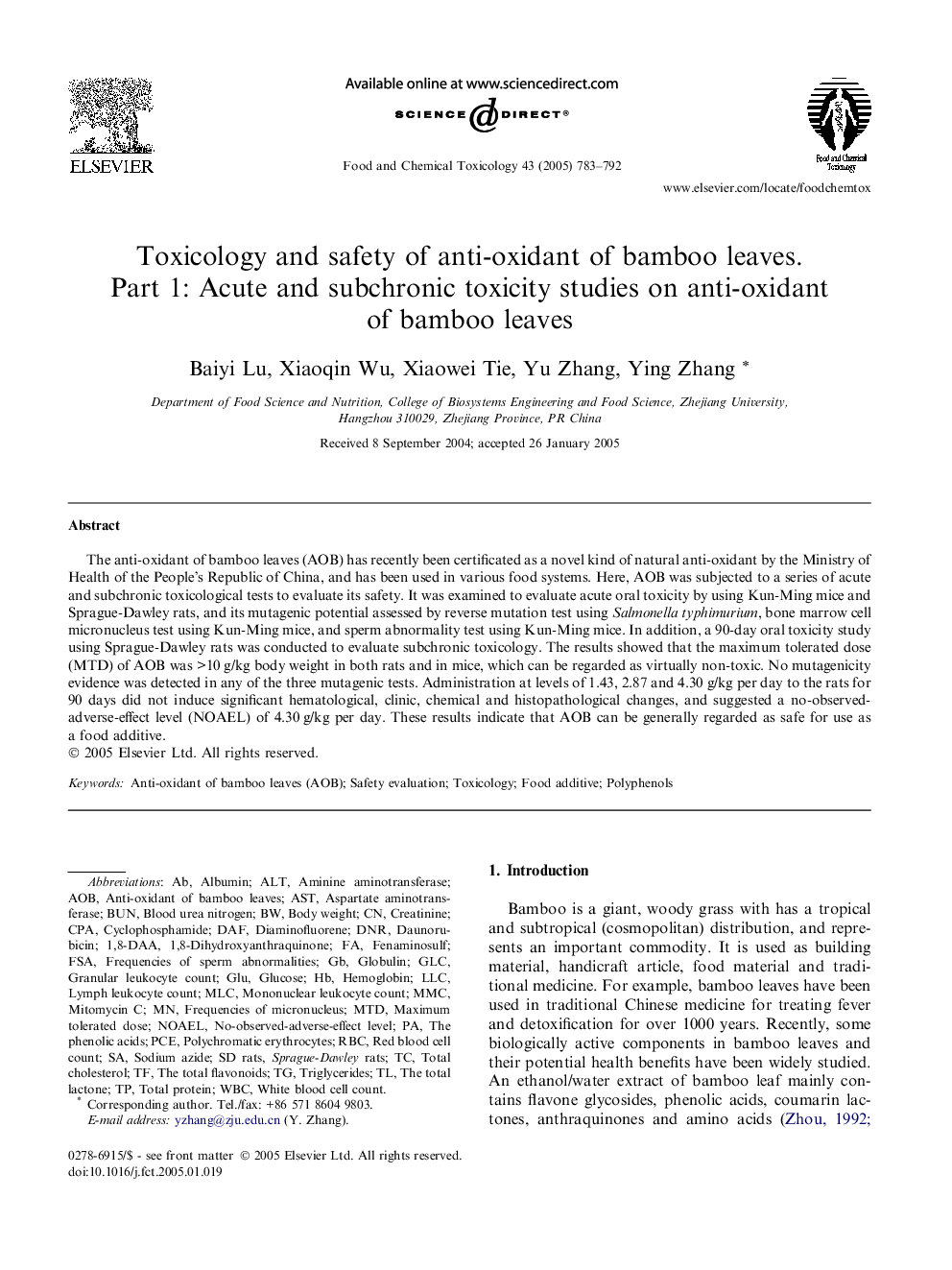| Article ID | Journal | Published Year | Pages | File Type |
|---|---|---|---|---|
| 9030664 | Food and Chemical Toxicology | 2005 | 10 Pages |
Abstract
The anti-oxidant of bamboo leaves (AOB) has recently been certificated as a novel kind of natural anti-oxidant by the Ministry of Health of the People's Republic of China, and has been used in various food systems. Here, AOB was subjected to a series of acute and subchronic toxicological tests to evaluate its safety. It was examined to evaluate acute oral toxicity by using Kun-Ming mice and Sprague-Dawley rats, and its mutagenic potential assessed by reverse mutation test using Salmonella typhimurium, bone marrow cell micronucleus test using Kun-Ming mice, and sperm abnormality test using Kun-Ming mice. In addition, a 90-day oral toxicity study using Sprague-Dawley rats was conducted to evaluate subchronic toxicology. The results showed that the maximum tolerated dose (MTD) of AOB was >10Â g/kg body weight in both rats and in mice, which can be regarded as virtually non-toxic. No mutagenicity evidence was detected in any of the three mutagenic tests. Administration at levels of 1.43, 2.87 and 4.30Â g/kg per day to the rats for 90 days did not induce significant hematological, clinic, chemical and histopathological changes, and suggested a no-observed-adverse-effect level (NOAEL) of 4.30Â g/kg per day. These results indicate that AOB can be generally regarded as safe for use as a food additive.
Keywords
PCE, polychromatic erythrocytesRBC, red blood cell countbw, body weightCPA, cyclophosphamideDNR, daunorubicinGLU, glucoseHb, hemoglobinMMC, mitomycin CMTD, maximum tolerated doseNOAEL, no-observed-adverse-effect levelTG, triglyceridesTP, total proteinWBC, white blood cell countAST, aspartate aminotransferaseSafety evaluationToxicologyFood additiveBUN, blood urea nitrogenPolyphenolsTC, total cholesterol
Related Topics
Life Sciences
Agricultural and Biological Sciences
Food Science
Authors
Baiyi Lu, Xiaoqin Wu, Xiaowei Tie, Yu Zhang, Ying Zhang,
